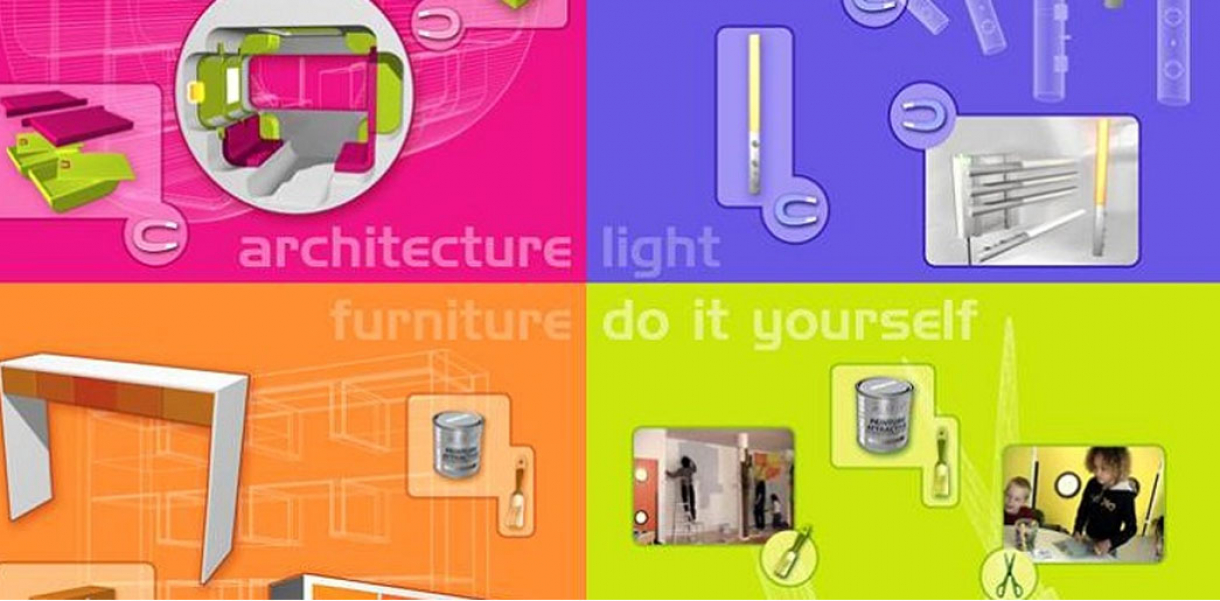The designers developed this system as a solution to ensure that during natural disasters, all households will have access to clean water. Home Tanker 100L is a rainwater storage tank, which is equipped with 10 polyethene-made tanks. In the day-to-day use, the water that is converted from rain can be used for washing, gardening, and etc. in the emergency situations, such as natural disasters; the water in the storage tanks can be used when tap water is not available due to break down of public infrastructures.
Very slim design - it can be stored in a small space. In an emergency, the water can be taken out tank by tank - a carry-able unit.
Functionality and use of design
The design team found out that during the big earthquakes in Niigata, 10L polyethene-made tanks were most frequently and conveniently used because it is the easiest size for children, women and the elderly living alone.
Ten tanks are mounted on the product and each one of them can take out easily. The tanks are stored in a box unit for the water quality.
How did this design improve life?
This design was developed during the earthquakes that took place last year in Niigata Prefecture, the northern part of Japan where the designers’ families have lived for generations. Over 100,000 people lost their homes to the devastating earthquakes and today thousands are still living in temporary shelters. The designers developed this system as a solution to ensure that during natural disasters, all households will have access to clean water. Home Tanker 100L is a rainwater storage tank, which is equipped with 10 polyethene-made tanks. In the day-to-day use, the water that is converted from rain can be used for washing, gardening, and etc. in the emergency situations, such as natural disasters; the water in the storage tanks can be used when tap water is not available due to break down of public infrastructures.
For developing countries, this system can be used to provide cheap, clean water on a day-to-day basis. It is compact and easy to install.
Drawbacks of life improvement
Drawback 1
Utilization of rainwater
Depending on a location, a perception of this concept varies. For example, a location that is close to a river, lake, pond, and reservoir - where a need for an emergency water use is not the largest concern, this product may not be appropriate. On the other extreme, a location where its rainfall is almost none or a pollution of rainwater is severe, the product will not be able to function as it is.
Drawback 2
Reliance to an environmental resource, rainwater
This is the fundamental idea of this product. It means that the water is kept clean, as long as there is a rainfall to circulate the water system. But when the flow of incoming water stops for a while, the quality of water degrades. Since the biggest interest of this product is to store the water, it is a bit problematic to be uncertain how much water is really available at a particular instance.
Research and need
From January 2002, an investigation on the utilization of rainwater was being conducted. The project member visited Rainwater Museum, located in Sumida Ward, Tokyo, where the local government is well known for research on the utilization of rainwater. At the museum, the use of rainwater in the world was thoroughly studied, and the development of a water tank was being conducted soon after.
On this development phase, analysis of existing water tanks was carried out to examine their advantages and disadvantages. From the analysis, it was found that the price of the tank is the biggest issue and hindering the wide use of the tank by consumers. The research also showed that the cost of the tank is proportional to its usability.
In order to tackle this problem, the project member came to the conclusion that if a tank can be provided with an adequate price range, it will be more likely to be used. With cost-effectiveness at a sight, the use of polyurethane was considered as the tank's material at the first place, because of the material's cost performance. But later, it was discovered that there are many similar polyurethane made products on the market and its appearance is difficult to match with the surrounding environment.
An underground system was also considered but it will face greater difficulties, such as extra work required to obtaining water and cleaning the tank, and the high installation cost.
While searching for the optimum system, the member came across with a website that reports Great Hanshin-Awaji Earthquake. There was an article titled, "Dreaming 10L polyethene tank", which reports the usefulness of the tank in an emergency situation.
With an aspiration from the article, a blueprint, which utilizes 10L tanks, was being drawn. During the drawing process, many problems, such as the structure of the tanks, the control of water flow, the location of inlet and outlet, removal of the tank, and cover design for the prevention of water degradation, were solved one by one.
In September 2004, the first prototype was assembled. This prototype had one problem and that is the joint part between the tank and pipes. The part was made with high cost, and the design of the joint was not optimized. In the end, further examination was carried out.
In October a suitable material was discovered for the joint, and the design's final framework was being set. In November, the blueprint completed and the final product was assembled in December.
The product entered IDS Design Competition 2005, (organized by Niigata Industrial Creation Organization) and received the IDS Grand Prize.
Designed by
Toshihiko Ikarashi & Hideya Kurosaki - Japan






